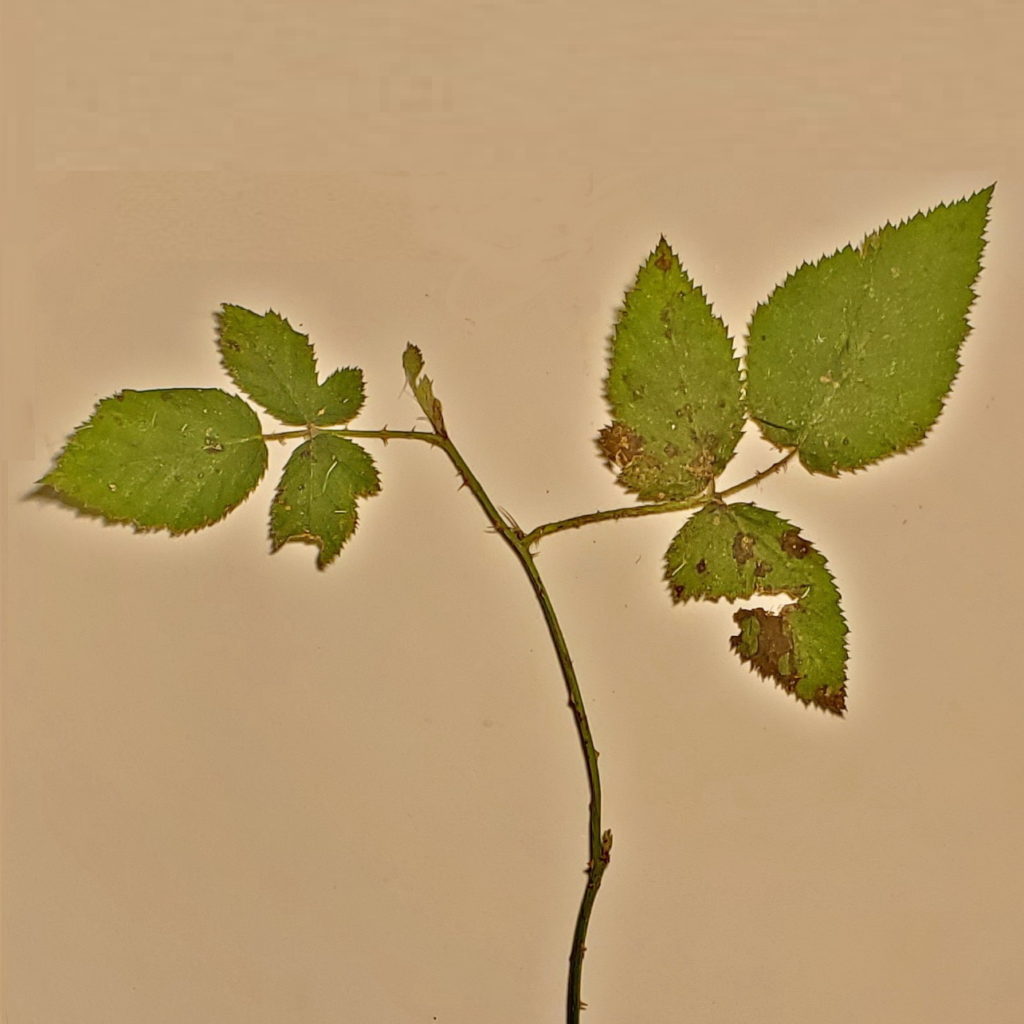When new blackberry plants sprout in our backyard forests, it can sometimes be difficult to tell whether they are the native Trailing Blackberry (Rubus ursinus) or the invasive Himalayan Blackberry (Rubus armeniacus). For example, do the leaves in the photo below suggest R. ursinus or R. armeniacus? Though the arrangement of leaves on the right looks like the native ursinus, the leaves on the left show indications of a fourth and fifth leaflet suggesting the invasive armeniacus. The prickles look like armeniacus, but the stem is roundish like ursinus. Could it be a hybrid?

Lindsay Virginia Clark studied Rubus hybrids extensively at UC Davis publishing several papers (here, here, and here). In reviewing the literature, she found that although naturally-occurring Rubus ursinus hybrids were thought to be rare, in the realm of horticulture R. ursinus was used in the creation of several popular cultivars including Loganberry and Marionberry. To look for natural hybrids Professor Clark and her colleagues proceeded to genotype over 579 individual blackberry plants from 14 natural sites scattered across California, Oregon, and southern Washington. They found that about 1% of these (all from California) were hybrids of R. ursinus and exotic Rubus species (mainly R. armeniacus).
Their genetic analysis showed that R. ursinus was the maternal parent of the hybrids, meaning that a pollinating insect would have picked up pollen grains from early blooming armeniacus and deposit them on late blooming ursinus. The resulting fruits would have been eaten and dispersed by birds or mammals, with the resulting hybrids displaying characteristics of both parents.
What does this mean for backyard forest restoration?
The narrow overlap in blooming periods between Trailing Blackberry (May – June in SW Washington) and Himalayan Blackberry (June – August), should help to limit natural hybridization in our region. However, I think it makes sense to remove any blackberry plant showing characteristics of the Himalayan, like hints of the fourth and fifth leaves growing out of the second and third leaves, polygonal stem cross sections, or larger prickles. This could mean removing a native Trailing Blackberry occasionally, but it’s worth the risk. Hybrids have the potential to develop into new and invasive populations. At least one source (here) already identifies Trailing Blackberry as invasive. It would be unfortunate if it acquired even more invasive traits from the Himalayan.
I’ve already learned the hard way to be careful where I plant Trailing Blackberry. In full shade it grows slowly and helps fill gaps in ground cover, but in sites with good soil and full sun it can overtop everything else. Though this may help deter some invasive plants and provide food and shelter for wildlife, it may also smother delicate native plants. Once it has a deep taproot it is hard to get rid of. A few years ago, I made the mistake of putting Trailing Blackberry into a partially sunny edge where I wanted a mix of native wildflowers and have been trying to remove it from there ever since.